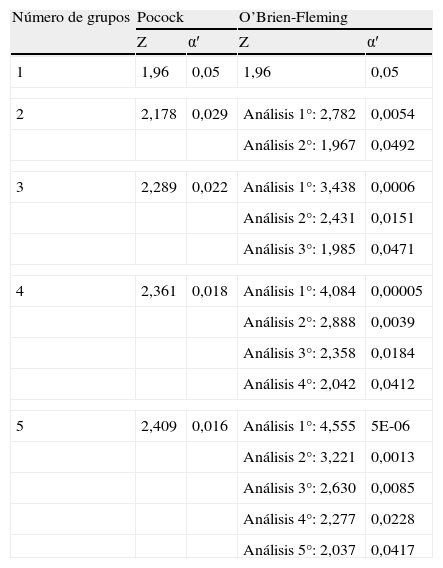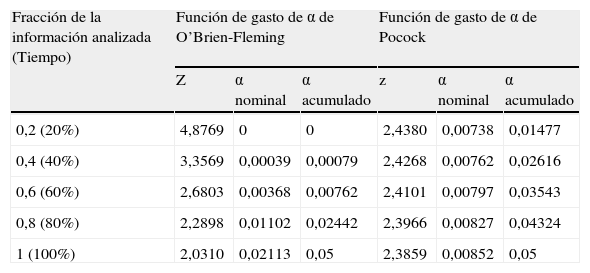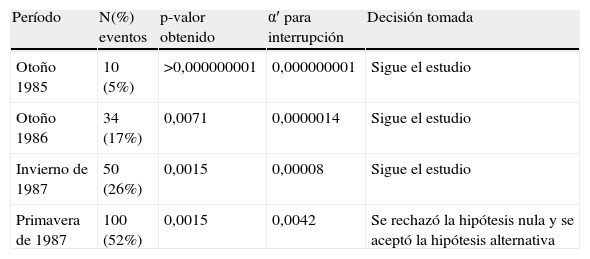A diferencia de otros diseños estadísticos utilizados en la investigación clínica, en el diseño secuencial no se fija el tamaño muestral previamente, sino que éste varía en función de los resultados que se van obteniendo. El análisis intermedio se define como la evaluación del tratamiento durante una etapa inicial del estudio y puede conducir a la finalización del estudio. El efecto del tratamiento respecto al control se evaluará durante una serie de intervalos de tiempo prefijados. Se deberá detener el estudio si hay diferencias estadísticamente significativas en el nivel de significación global α; en caso contrario se continuará con el estudio hasta llegar a un tamaño muestral máximo (n), momento en el que también se detendrá el estudio y se aceptará la hipótesis de igualdad. Como consecuencia, los diseños secuenciales permiten, en general, disminuir el número de pacientes necesarios, pero aumentan el grado de complejidad del estudio, ya que la información sobre el estado de los pacientes debe conocerse continuamente, lo que supone un gran esfuerzo en la supervisión del estudio y en el seguimiento de los pacientes. Se trata, por tanto, de buscar un equilibrio entre menor tamaño muestral (n) y mayor complejidad.
Sequential design differs from other statistical designs used in clinical research in that the sample size is not fixed in advance but it varies depending on the results obtained. The intermediate analysis is defined as the treatment evaluation during an initial stage of the study and may lead to the termination of the study. Treatment effect with respect to control is evaluated across a series of pre-established time intervals. The study should be halted if there are significant differences in the level of overall significance, α. If this does not happen, then the study continues until reaching a maximum sample size, n, at which point the study ends and the hypothesis of equality is accepted. In general, sequential designs require fewer patients, although they make the study more complex because there is a need for continuous information about the patients’ status; this latter aspect requires greater effort in terms of both study monitoring and patient follow-up. The aim therefore is to find a balance between smaller sample size (n) and greater complexity.












